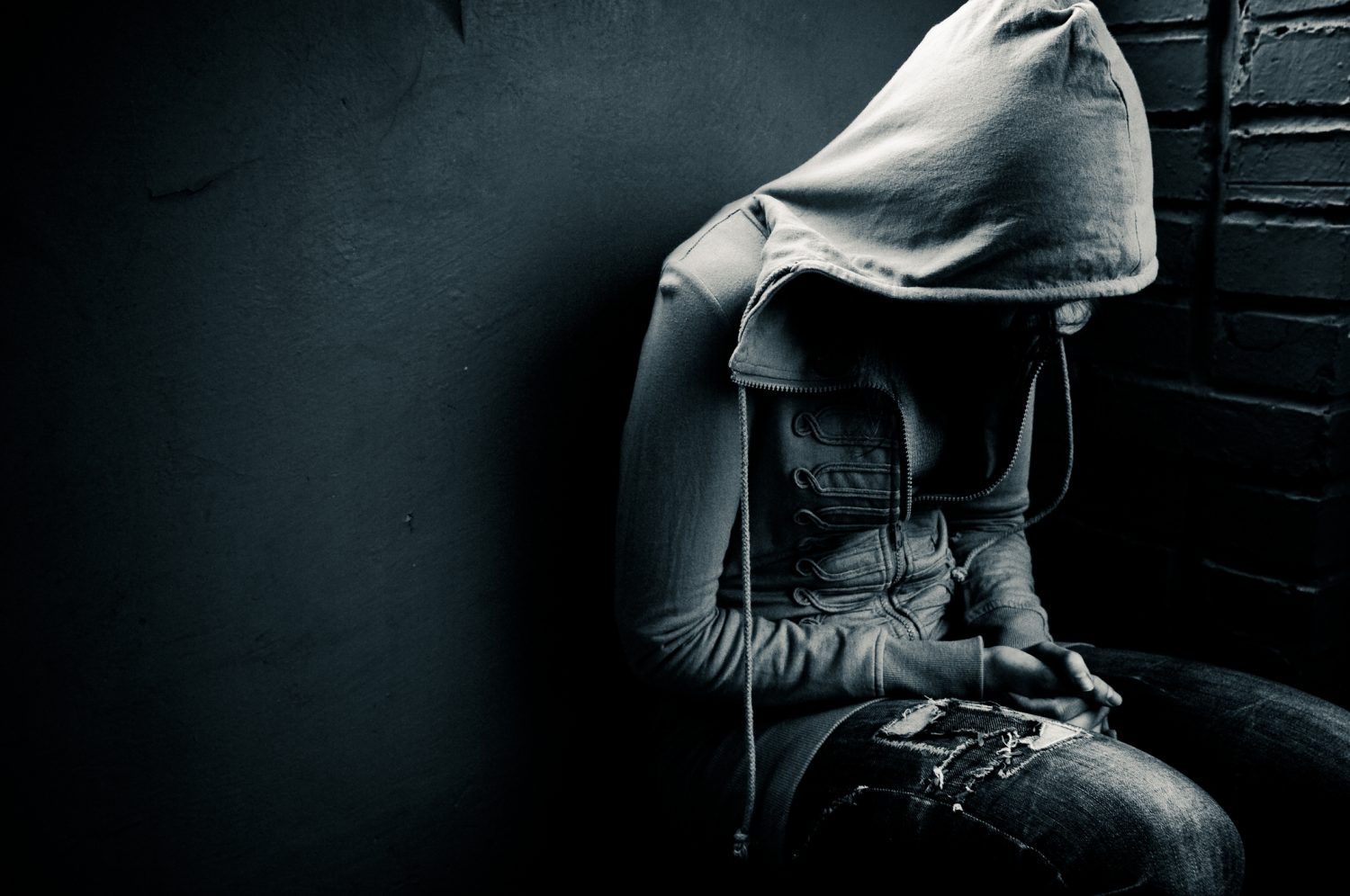by Sher Delva | Aug 11, 2017 | Addiction, Addiction Stigma, Celebrity, Stigma, Therapy, Withdrawal

Not long ago, we wrote an article regarding WWE Hall of Fame wrestler Kurt Angle and his journey to sobriety. Now, Kurt Angle is thrilled to announce that he has achieved four years of sobriety!
On Sunday evening, the wrestler posted a black and white meme of Mickey Mouse flipping the bird that said, “To all the people who said I couldn’t stay sober this long…”
He continued his words with a more serious tone:
“Yesterday was my 4th year anniversary of remaining sober. I’m very humbled by my progress and support. Had to post this, because there’s very little humor in recovery.” Angle continued, “So I’m going to enjoy this. Hope you all do too! “Here’s to 4 years bitches!!!!” #stayingsober #doingitformyfamily #itstrue.”
The 48-year-old has been vocal about his addiction and recovery from prescription painkiller addiction. Angle was first introduced to painkillers in 2003 after sustaining a neck injury. He felt pressured to conceal his injury to continue working, so he opted for painkillers to alleviate the pain.
“I remember taking that first pill, and I was like, ‘well, this makes me feel really good. I feel like I can take on the world and I can’t feel my neck.’ And the affect it had on me gave me more energy than I normally had, so I liked that feeling. So I tried that. One turned to two. Two turned to four. Four turned to eight. And before I knew it, I was out of control,” he said in an interview.
In order to conceal his drug use, Angle would hold off on taking narcotic pain medication during the evening. Right when the night time hit, he would abuse painkillers, alcohol, and anti-anxiety medication. At one point, Angle says he was ingesting 65 painkillers a day. He managed to rack up four DUIs over a six-year period.
At times, he was able to withdraw from opioids on his own, but eventually the desire to use caught up with him.
Looking back, Angle admits: “When you’re that deep into that stuff – you can’t do it on your own.”
In August of 2013, Angle finally reached his breaking point. After his fourth DUI in Wise County, Texas, he decided to enter rehab and has been sober since.
Since entering recovery, Angle has returned to the WWE as a general manager and has launched an app and website to help those in recovery.
“I’m traveling all the time for work, and I’m a husband and father to five kids, so I just don’t have time for AA meetings,” he said. “I could go to a counselor or a psychiatrist, but that’s pricey and still just one day a week. Where was I going to get this structure now?”
Because of these concerns, Angle developed a space that would help give people in recovery a sense of accountability and structure. The site and app, AngleStrong, offers users support, structure, positive affirmations, goals and reminders to help with their sobriety. The site offers tools that help address all aspects of recovery.
Angle stressed how crucial it was for him to maintain a conversational about addiction.
“What keeps me clean is talking about my addiction. I do it daily, whether it’s in the form of talking to a group, an interview or a video chat. And at the same time, I’m giving back.”
We commend Kurt Angle for his efforts in not only staying sober but helping others struggling in their journey as well. It is so important to offer a helping hand to those in the early stages of sobriety. The first year of recovery is challenging and a completely new experience. It is important to create a network of people who will keep you accountable during this period of time.
Addiction is a disease and recovery is the only way to manage and take back control fully. If you are struggling with mental illness or substance abuse, please do not wait to seek help. At one point, Angle felt completely out of control, but recovery gave his life back. You can regain yours too. Call now.
CALL NOW 1-888-922-5398
by Sher Delva | Aug 4, 2017 | Addiction, Celebrity, Drug Abuse, Mental Health, Stigma, Therapy

Any James Franco Fans Out There?
James Franco recently opened up about what he calls his “addictive personality.” It turns out the actor/director has struggled with workaholism and mental health his entire life.
Franco is known for his eclectic resume, starring in films such as Milk, Spiderman, Spring Breakers and City by the Sea. He has appeared in television shows like Freaks and Geeks and General Hospital.
The interview, with Out magazine, was to promote his upcoming HBO series, The Deuce. Franco chatted with novelist Edmund White about some of the challenges he faced, and how he managed to overcome them.
Teenage Angst
Franco’s troubles start way back in his teen years. During this period, he was arrested for underage drinking, graffiti, and shoplifting, among other things. Reflecting on that time, Franco told the Guardian, “It was teen angst. I was uncomfortable in my own skin. I was shy.”
Franco found acting as a way to cope and passionately immersed himself in it. He found acting to be an excellent outlet for his personality type. However, soon acting “became everything” to the point where he did not even socialize.
After doing nothing but working, Franco says he realized he was depressed, isolated and lonely.
“I really threw myself into it, and that became everything, to the point where I didn’t even socialize. And then after, like, 10 years of that, at age 27, I realized, ‘Man, I’m so depressed. On the surface my life seems pretty good—I have a career and everything—but I feel isolated and lonely,’” he admits
To combat these feelings, he decided to switch gears and go to school at Brooklyn College. However, just like with acting, academics became the focus of all his attention, and he was obsessive with that as well.
“I threw myself into school, but again it was just this sort of running, running, running,” he says.
Franco told Out that it has been difficult to overcome his workaholism. One of the ways Franco has found helps is through participating in activities like surfing and taking classes at the International Dance Academy on Hollywood Boulevard.
He says these activities are part of his “therapy,” to help him overcome his work addiction.
“It’s a kind of therapy for me,” he said. “I’ve started a new chapter of my life. I was very work-addicted and addicted to other things—not substances, I got over that a long time ago—but I’ve recently changed my life, and this is part of my therapy.”
—
What is a Workaholic?
The concept of workaholism or workaholic behavior is very misunderstood. Often, people see these behaviors as positive qualities. You might even hear people joke about how they are a workaholic as a way of describing their passion for their job and solid work ethic.
The truth is workaholism is a real condition that can severely impact a person’s life. People addicted to work sacrifice their social life, families, and personal connections due to their obsessive desire to work.
But what’s the difference between a hard worker and a workaholic?
This is a very common question. A hard worker is someone who works very hard while at work and completes all of their tasks, yet still manages to find a healthy balance between work and personal responsibility. Of course, the occasional burst of overworking may occur to meet important deadlines however, this is not the norm.
Workaholics, on the other hand, are unable to make this differentiation. They view work as a source of adrenaline. They feel they must work harder than everyone else and put in more hours in order to succeed.
Workaholics achieve one goal and immediately set more ambitious ones. Staying at the same level of accomplishment is a failure and results in incredible distress. Workaholics sacrifice their health, family, and personal life in order to work.
Overall, workaholism is something rarely addressed, but like Franco, people who struggle with workaholism often need professional help. If you are struggling with workaholism, mental illness, or substance abuse, please reach out. You are not alone. Call now.
CALL NOW 1-888-922-5398
by Justin Mckibben | Aug 1, 2017 | Depression, Dual Diagnosis, Heroin, Mental Health, Mood Disorders, Suicide

(This content is being used for illustrative purposes only; any person depicted in the content is a model)
For many who have struggled with substance abuse it comes as no surprise that a link can be drawn between their drug or alcohol use and their mental health. A lot of people who struggle with addiction have experienced some form of emotional distress, trauma or abuse that has made a definite impact on their lives. While this may not be the sole reason behind their use, issues concerning mental health can contribute to drug or alcohol use in a dramatic way. With heroin and depression, the two tend to feed off of one another, creating an intense and deeper connection.
Understanding Depression
Depression is a very common but also very serious mood disorder, also referred to as:
- Major depressive disorder
- Clinical depression
This mental health condition causes a variety of symptoms that impact how an individual thinks, feels, and handles their day to day lives. A depression diagnosis depends on symptoms being present for at least two weeks, and some forms of depression will differ, or develop under unique circumstances. Some specific forms of depression include:
-
Persistent Depressive Disorder (Dysthymia)
This is a depressed mood lasting for at least two years. Sometimes the episodes of major depression is experienced in periods of less severe symptoms, but still the symptoms persist for two years or more.
-
Psychotic Depression
This is pretty straight forward. It happens when someone experiences severe depression along with some form of psychosis, such as:
These psychotic symptoms typically revolve around a particular depressive subject like guilt, poverty or illness.
-
Seasonal Affective Depression
This is the onset of depressive symptoms during winter months when there is less natural sunlight, which is why some call it ‘winter depression’. It is commonly characterized by:
- Social withdrawal
- Increase in sleep
- Weight gain
This depression typically disappears during spring and summer months as better weather returns, but comes back around every year.
-
Perinatal Depression
Many women experience relatively mild depressive and anxiety symptoms after delivery, usually only lasting around two weeks. However, perinatal depression is much more serious.
Mothers with perinatal depression experience full-blown major depression during pregnancy or after delivery, commonly known as postpartum depression. Feelings that accompany perinatal depression include:
These can make it difficult for new mothers to complete daily care activities for themselves and/or for their babies.
-
Bipolar Disorder
While bipolar disorder is technically different from depression, individuals with bipolar disorder do experience episodes of intensely low moods that qualify as major depression- referred to as ‘bipolar depression’.
However, someone with bipolar disorder also experiences extreme high moods, either irritable or euphoric in nature. These moods are also called ‘mania’, or the less intense with are called ‘hypomania’. This is why bipolar disorder was once called ‘manic depressive disorder’.
Beyond these five there are other forms of depression, and symptoms of depression may vary from person to person. But for most people with depression the symptoms they do experience are consistent on an almost daily basis.
Psychology of Heroin
For those who don’t know, heroin is a synthetic drug produced from morphine. Morphine is a powerful analgesic derived from the opium poppy plant. The effects of heroin are a result of the substance binding with receptors in the brain that respond to opiates. Once ingested, heroin converts to morphine in the brain, and this potent compound effects the brain in ways that influence psychology.
Morphine slows the neurological activity in the brain, creating sedation. This sedation creates the desired effect of many heroin users, which is the sense of profound relaxation.
Yet, the National Alliance on Mental Illness warns that people with psychiatric disorders (such as depression) are more likely to experience very negative side-effects. So while people with depression may try to use heroin to numb themselves to feelings of sadness, guilt or despair, they actually create a chemical reaction in the brain that exacerbates their depressive symptoms.
Heroin and Depression
Heroin and depression have a symbiotic relationship that creates a viscous cycle. The two fuel each other. An individual may use heroin to try and escape their depressive feelings, but using heroin frequently worsens symptoms such as:
Thus these feelings make the depression worse, the individual will use more heroin to escape, and the cycle continues.
With heroin and depression, the physical consequences of heroin use can also cause severe emotional distress. Physical effects of heroin that can increase feelings of depression include:
- Respiratory illness
- Blood-borne disease
- Muscular weakness
- Vascular damage
And heroin’s impact on an individual’s personal life can make depression even worse, such as:
- Financial problems
- Job loss
- Legal trouble
- Relationship issues
Again, these issues can cause a heroin user to abuse the drug more in order to cope with these difficulties, which continues to feed into their problems and exacerbate the issues even more.
Withdrawal from Heroin and Depression
Withdrawal from heroin is one of the typical reasons that many people trying to quit the drug are unsuccessful. These unpleasant side effects of not having the drug often pushes people trying to give up heroin back to the drug just to feel relief, and for those with depression the withdrawals from heroin can seem even more relentless.
Trying to abruptly discontinue heroin use without the help of medical detox will cause uncomfortable and sometimes extremely painful symptoms such as:
- Nervousness
- Intense cravings
- Restlessness
- Involuntary leg movement
- Sweating
- Muscle pain
- Sleeping problems
- Runny nose
- Stomach Pain
- Nausea
- Vomiting
- Diarrhea
Heavy use over an extended period can also lead to seizures. But while the physical withdrawal symptoms are already pretty bad, the psychological side effects can seem impossible to overcome, especially for someone with depression or other mental health issues.
Dual Diagnosis Treatment for Heroin and Depression
One of the most critical parts of treatment for heroin users with depression is to find the root cause of the depression, which is also one of the most challenging aspect of recovery for heroin users. Depression is not just a bad mood, and it does not simply stem from one source. Some of the most common sources of depression include:
- Genetics
- Brain chemistry
- Psychological trauma
- Physical disability
- Stressful social environment
- Drug or alcohol abuse
Dual diagnosis treatment is crucial for someone struggling with heroin and depression because the two conditions have such similar symptoms, which make each other worse. In many cases, it is difficult to even discover what came first, depression or heroin addiction. Either way, a huge factor to overcoming heroin and depression is with comprehensive and holistic dual diagnosis treatment.
Simultaneously addressing both issues and giving equal attention to both conditions gives way for more complete recovery. If one of the two is ignored, then it has the potential to eventually cause a relapse into the other. The deeper connection with heroin and depression is that these each of them is commonly inspired by similar circumstances, including genetics and trauma. Both will thrive through the impact of the other. Both are damaging and potentially fatal. But there is also help for each, and when treated in tandem they can each be overcome.
At Palm Healthcare Company, the idea of treating all parts of each individual is the core concept of our holistic approach to substance use disorder treatment. We believe that by providing personalized and effective care for each individual helps create lasting health, freedom and happiness in every aspect of life. If you or someone you love is struggling, please call toll-free now.
CALL NOW 1-888-922-5398
by Sher Delva | Aug 1, 2017 | Addiction, Addiction Stigma, Drug Abuse, Mental Health, Recovery, Stigma, Withdrawal

Just last week, a train hit a couple who were hugging and laying on the tracks in an apparent suicide pact. The crash occurred on South Florida’s Tri-Rail and the train driver says he did everything he could to stop the train but was unsuccessful. Shockingly, the couple survived the crash and both are in critical condition at the Delray Medical Center.
Suicide by train is not anything new. In fact, the act has been depicted many times in movies and television shows. In the United Kingdom, suicide-by-train accounts for 3.5% of all suicides. A 2012 exposé revealed stories from train drivers who had killed people while operating a train. For some, the trauma from the experience lasts a lifetime.
Surviving a train crash is rare. It is difficult for trains to stop quickly enough to prevent crashes from happening. Still, Tri-Rail is fighting back, doing everything possible to prevent these fatalities. Palm Beach County, specifically, is the site of most cases of suicide-by-train. At least five people have been struck this year, four of them by Tri-Rail.
The crash is a reminder to Tri-Rail about the importance of suicide awareness and education, Tri-Rail spokeswoman Bonnie Arnold said.
“Unfortunately, suicide by train is a pretty sure thing. If someone wants to commit suicide, it’s pretty hard to prevent it.”
In response, Tri-Rail plans to put up crisis-intervention signs in vulnerable areas. They hope the signs will help people think twice about taking their own lives. The sign will also warn crews of the six problem spots along its 72 miles of track, which run from Miami-Dade to Palm Beach Counties.
Another Solution? Drones.
Tri-rail is also considering drones as a way of monitoring the tracks and deterring suicides. The drones would help alert train drivers of potential accidents further in advance. The drones would spot people on the tracks early enough to warn the drivers of potential issues.
Furthermore, The Florida Department of Transportation plans to launch a public-service campaign on radio, TV, and websites urging people to stay away from the tracks.
Florida’s New Brightline Trains Sees First Suicide
The newly constructed Brightline train has not even been open yet, and already has experienced their first suicide. The train is supposed to offer Floridians a much faster and relaxing way of commuting.
The website boasts:
- Go from Fort Lauderdale to Miami in 30 minutes
- Go from West Palm Beach to Miami in 60 minutes
- Work or play while you travel, care free and car free.
However, with the speed and convenience comes a high potential for suicide attempts. The trains are still in the testing phase and already an 18-year old woman was struck and killed when a train was going southbound on Monday afternoon.
“Our thoughts and prayers are with those affected,” the company said in a statement. “We are cooperating with the local authorities as they complete their investigation.”
In preparation for the start of service, the company has been working to promote train safety through workshops and warning students about the dangers of walking along the tracks.
Overall, these recent suicides are a serious indicator of problems to come as more trains develop all across South Florida counties. As for the couple mentioned, we will have to see if they are able to make a full recovery.
On average, there are 121 suicides every day in the United States. Mental illness is a serious problem and it is important to raise awareness. If you are struggling with thoughts of hopelessness and suicide ideations, know you are not alone. There Is help out there. Do not wait. Call now.
CALL NOW 1-888-922-5398
by Sher Delva | Jul 27, 2017 | Addiction, Addiction Medicine, Addiction Stigma, Stigma, Therapy, Withdrawal

(This content is being used for illustrative purposes only; any person depicted in the content is a model)
Barbara Harris believes drug addicts should not have children, and she’s using cash incentives to ensure they never do.
For the last 20 years, Harris has driven across the country in a branded RV advertising her non-profit to drug addicts and alcoholics.
Her mission? To reduce the number of children born addicted to drugs and alcohol.
Her nonprofit, Project Prevention, pays substance abusers up to $300 to get sterilized or put on long term birth control like an implant or IUD. Those who get sterilized receive a lump sum and those who opt for less permanent birth control options get their payments in smaller installments.
To date, Harris’s organization has paid more than 7,000 people, mostly women, to give up their fertility. Project Prevention only pays the addicts and leaves the sterilizations and birth control procedures to doctors.
Harris believes the cash incentive is stopping a major societal problem in its tracks:
“We’re preventing women who are strung out on drugs and alcohol from conceiving a child,” Harris says. “Nobody has a right to force-feed any child drugs and then deliver a child that may die or may have lifelong illnesses.”
Drug and alcohol use during pregnancy can result in a host of medical complications. The use of heroin and narcotic painkillers like OxyContin, Vicodin, or morphine can cause bleeding within the brain (intracranial hemorrhage) and even infant death.
Neonatal Abstinence Syndrome (NAS) is defined as: “a group of problems that occur in a newborn who was exposed to addictive illegal or prescription drugs while in the mother’s womb,” according to Medscape.
- Every 25 minutes, a baby is born suffering from extreme withdrawal symptoms from the heroin, painkillers, or cocaine their mothers continued using throughout pregnancy.
- The numbers of babies born addicted to drugs have quadrupled between 2004 and 2013.
- In 2013, 27 babies out of every 1000 were born dependent on narcotics.
- These babies suffer from withdrawal symptoms like irritability, convulsions, sleep abnormalities and joint stiffness.
- Often, these babies must be sent to intensive care units where doctors help wean them off the drugs.
- It is taking longer to wean addicted babies off drugs such as heroin and mephedrone. On average, babies now spend their first 19 days – up from 13 days – in the Neonatal Intensive Care Unit.
- In 2015, the average overall cost of a newborn suffering from NAS was found to be between $159,000 and $238,000, and these numbers are expected to continue to rise.
In terms of alcohol consumption during pregnancy, fetal alcohol syndrome is another tragic outcome. Fetal alcohol syndrome can seriously harm the development of a baby during pregnancy, both mentally and physically. These effects can last throughout a child’s life.
FAS harms a baby in many ways including:
- Birth defects
- Vision or hearing problems
- Low birth weight
- Learning disabilities
- Speech and language delays
- Behavioral problems
- Growth deficiency
- Death
Some say Harris’s Organization Raises SERIOUS Ethical Questions
Harris’s mission to reduce these pregnancies seems straightforward. However, many feel her organization raises serious ethical questions. One question posed is whether she is taking advantage of addicts during their most vulnerable time.
A major critic of Project Prevention is Lynn Paltrow, Executive Director of National Advocates for Pregnant Women. She’s been a critic of Harris’s work for over 20 years.
“Barbara Harris greatest impact is in perpetuating really destructive and cruel myths about pregnant women and their children,” Paltrow says.
Paltrow believes Harris’s organization does more harm than good and does not address the underlying problems of poverty, lack of access to healthcare and stress created by racism have on these women. Instead, she feels Harris’s organization does nothing more but promote stigma.
“When you talk to the medical researchers, the great news is that none of the criminalized drugs cause unique permanent terrible damage,” Paltrow says. “Three percent of all women give birth to babies that have what are called serious birth defects. None of that has anything to do with the criminalized drugs.”
Another strong critic featured is Mary Barr, a former addict who believes what Harris is doing is wrong. Barr has two children who were born healthy despite her drug use.
“I have two children who are incredibly healthy, were born healthy, they’re 26 and 25, and they’re very amazingly successful,” she says.
When asked if she would have taken up on Harris’s offer at the height of her addiction, she says she would have.
“I would have taken it because $300 all at once, that means for me, three nights of sleeping indoors,” she says referring to her predicament back then.
Is Project Prevention Denying Addicts a Second Chance?
Despite the controversy, Harris believes what her organization is doing is the right thing for the children. She does not believe she is promoting sterilization. Instead, she says what she offers is a choice.
“We don’t promote sterilization, that’s their choice. They got strung out; they decided they wanted $300 to sterilize themselves, and if it’s a decision they regret, it was a decision they made just like prostituting and ending up with AIDS,” she says.
One of the reasons Harris is so passionate about this is because she adopted and raised four children from the same mother who used drugs throughout her pregnancy. She wants to prevent other children from being born in the same situation.
“I watched how my children suffered and had to withdraw from drugs when they were born so no, I wasn’t thinking about ‘These poor women,’ I was thinking ‘My poor children,’” she says.
“I always say to them if you believe that strongly that these women should keep conceiving children then you should step up and adopt the next one born, but most of the people who have a problem with what we’re doing would never consider adopting one of these children, so if you’re not part of the solution, you’re part of the problem,” she concludes
Overall, like most harm reduction programs, this solution is controversial. There are many addicts who have recovered and gone on to have and raise children. Sadly, there are children born every day addicted to drugs and alcohol, and the consequences are real. Harris’s organization receives over $500,000 in funding every year. Clearly, there are many on her side when it comes to providing this option.
What are your thoughts? Does a program like this promote stigma or offer a solution? Either way, please do not continue to let your addiction take over your life. You deserve the opportunity to live a healthy and satisfying life. If you or someone you love is struggling with substance abuse or mental illness, please call now 1-800-777-9588.
CALL NOW 1-888-922-5398






